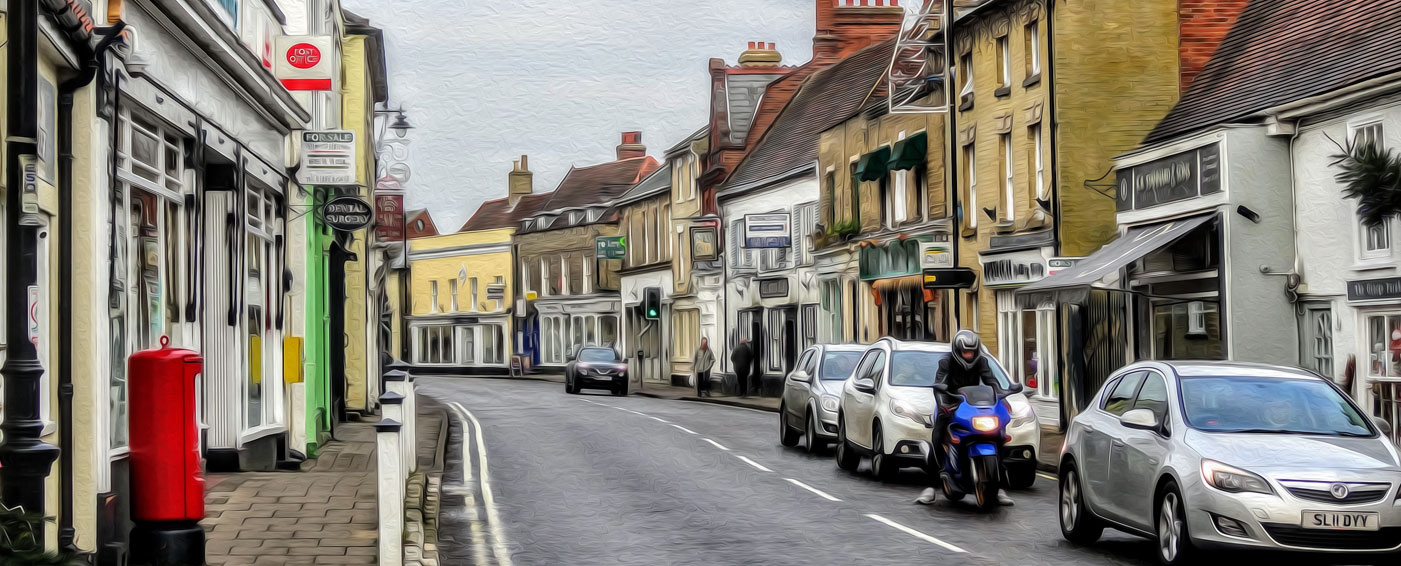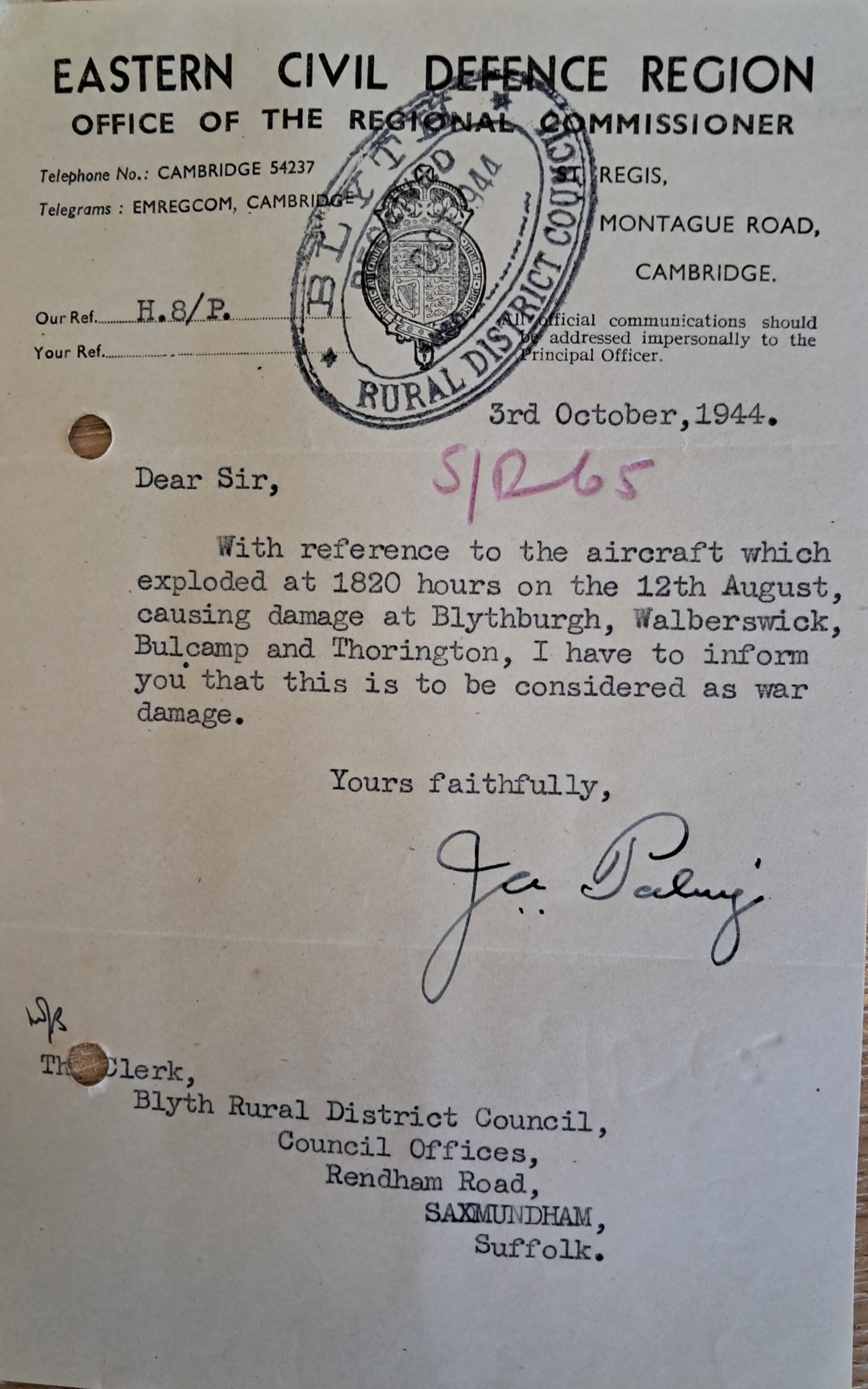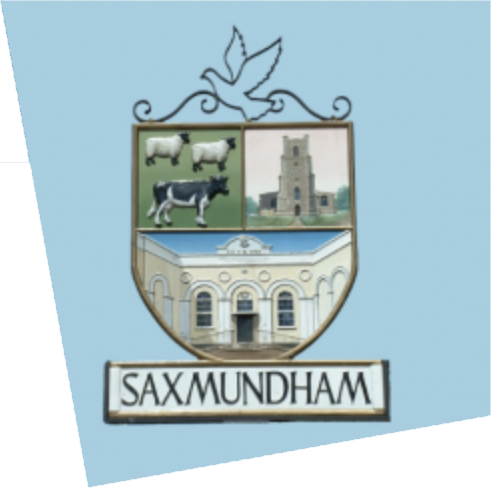Bomb Damage Records Uncovered in Saxmundham Town Council Archives
During an archiving session, Sharon Smith, Saxmundham’s Town Clerk uncovered a fascinating record from World War Two hidden amongst the Town’s papers. Whilst not pertaining to Saxmundham, the former Blyth Rural District Council’s (RDC) property war damage documents were deposited with the Town’s records after abolishment of the RDC in 1972.[1]
The collection covers the years 1940-1944. Poignantly the records reveal the extensive but minor damage to property incurred due to the extremely dangerous and ill-fated mission of Lt. Joseph Kennedy, elder brother of John F. Kennedy, on 12 August 1944. Kennedy’s Liberator aircraft exploded at 2,000 feet and caused widespread damage to properties in Blythburgh, Hinton, Thorington, Walberswick and Wenhaston. The records reveal that war damage was not always the result of Nazi attacks.
There are records of damage caused by mainly crashed United States Airforce (USAF) aircraft, British land mines, Barrage Balloons and the enormous USAF Metfield bomb dump explosion on 15 July 1944 that affected over a hundred properties in Linstead Parva, Chediston, Cookley, Wenhaston and Walpole. The sizeable archive includes details of damage from the feared flying bombs and the major attacks of 25th and 26th August 1942 on Marlesford, Hacheston, Parham and Framlingham.
Consisting of two large record books and two boxes of supporting paperwork, the archive provides not only a comprehensive record of damaged properties but highlights another facet of the totality of the Second World War. Not only were people affected by the loss of loved ones, rationing and shortages, blackouts and travel restrictions, but also the loss and damage to their homes; their place of security in troubled times.
Undoubtedly the archive will be of great interest to family, local, house and military historians as it includes a vast amount of information including: the cause of damage, names of owners and occupiers, the extent of the damage, detailed contractor’s repair accounts, including the names of the workmen, and at times, poignant correspondence. After photocopying documents that relate to villages adjacent to Saxmundham for reference in Saxmundham Museum, the archive will shortly be deposited with The Hold in Ipswich.
Cllr Bobby Bennett, Cabinet Member for Equality and Communities at Suffolk County Council, said: ‘We are very grateful that Saxmundham Town Council are going to deposit this exciting and important find with us at The Hold where it will be accessible for researchers once it has been catalogued. The stories revealed, illustrate how local history can contribute to national and international narratives and will complement other archives that we have relating to the Second World War in Suffolk. War damage claims often contain fascinating details about both the people and the buildings affected as well as the local businesses who repaired the damage and illustrate the impact of hostilities on Suffolk. ’
[1] The former RDC encompassed an area from Walberswick and Cratfield in the north, as far west as Earl Soham, south east to Marlesford and east to Aldeburgh, but excluded Urban District Councils: Aldeburgh, Halesworth, Leiston and Saxmundham. Formed in 1934, the council was abolished in 1972. Saxmundham was the administrative centre for the RDC. (See: BLYTH RURAL DISTRICT COUNCIL RECORDS | The National Archives),




